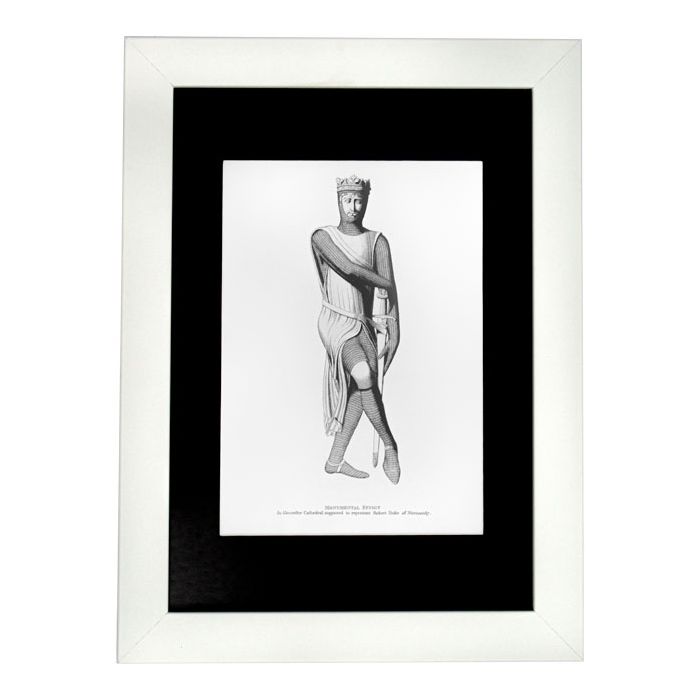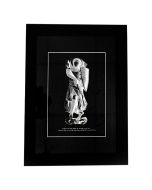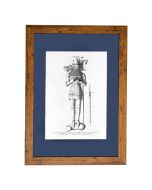Robert Duke of Normandy Framed Print - White Frame
Includes print and white A3 frame.
Each Effigy is printed on high-quality 230gsm Archival Matt paper using CANON LUCIA ink to deliver stunning results and provide longevity for decades to come.
Heritage frames are made from high-quality MDF fitted with high-clarity Perspex safety glass and are ready to hang straight out of the box.
Each frame contains a museum-quality conservation barrier card, conservation backing board and a high quality Daler Rowney white core acid free bevelled edge mount.
Frame Dimensions:
Height: 48cm
Width: 36cm
Depth: 1.5cm (40mm frame thickness).
All dimensions are approximate.
Robert Duke of Normandy was the eldest son of William the First, King of England. He claimed the Dukedom of Normandy of his father during his lifetime, prosecuted a war against him on that account, unhorsed and wounded him, not knowing who he was, at the battle of Gerbrai. On discovering a mistake which might have involved him in the guilt of parricide, he made a humble submission to William, who was however implacable and denounced a curse against him, to which Robert’s subsequent misfortunes are attributed by the historians of the time.
On his deathbed the King disinherited him of his claim of succession to the English crown, substituting his second surviving son, William le Roux, Rufus, or the Red, in his room. An unsuccessful effort was made by Odo Bishop of Baveux, the Conqueror’s half-brother, to depose William Rufus, in favour of Robert, and shortly after William retorted the design, by laying claim to and levying war in the Duchy of Normandy.
In 1096 the mania of the Crusade prevailed through Europe, and Robert Duke of Normandy took the Cross. In order to defray the expense of equipping his forces for the expedition, he mortgaged his Dukedom to his brother William.
He distinguished himself greatly by his chivalrous feats in the Holy Land. On one occasion he pushed alone into the thickest of the Saracen host,* mortally wounded their Amiral, or Emir, and greatly contributed to a signal victory over them.
On the capture of Jerusalem, he was chosen King of the Holy City by the leaders of the Christian army but declined the office in consequence of his views of succeeding to the Crown of England, and Godfrey de Bouillon was elected in his stead. On the death of Rufus, and the accession of Henry the First, a second attempt of the friends of Robert to place him on the English Throne proved abortive. Henry in his turn invaded Normandy, overcame his brother at the battle of Tinchebray, made him prisoner, carried him to England, and placed him in confinement.
Relying on some unstable promises, and urged chiefly by the Earl of Chester, he openly threatened vengeance, and escaped from his keepers; but his horse in his flight falling into a deep bog, he was retaken, committed to closer custody, and, as is said, to prevent further attempts, barbarously deprived of sight by order of his brother. This was effected by the application of a red-hot brazen basin to his eyes. The fact, however, seems to rest upon questionable authority.
In 1134 Robert had grown old in prison, bewailing his sins, and regarding his misfortunes and confinement as the punishment for having refused the kingdom of the Sacred City. His body, by command of King Henry the First, was reverently interred in the cathedral of Gloucester, before the high altar.
A chest or shrine of oak was some time after erected for him; from the costume of the incumbent figure, probably early in the following century. Sandford says this memorial was very near being destroyed when the Parliament army possessed themselves of Gloucester and the cathedral against Charles the First. The scattered parts of the monument were bought by a loyal individual of the soldiers, concealed until the Restoration, when they were put together, and replaced in the cathedral.
The figure lies with the legs crossed, the attitude of a Crusader, habited in chain-mail, over which is a Iong surcoat.
| Specification | White Frame Dimensions: Height: 48cm Width: 36cm Depth: 1.5cm (40mm frame thickness). |
|---|---|
| Bestseller | No |



